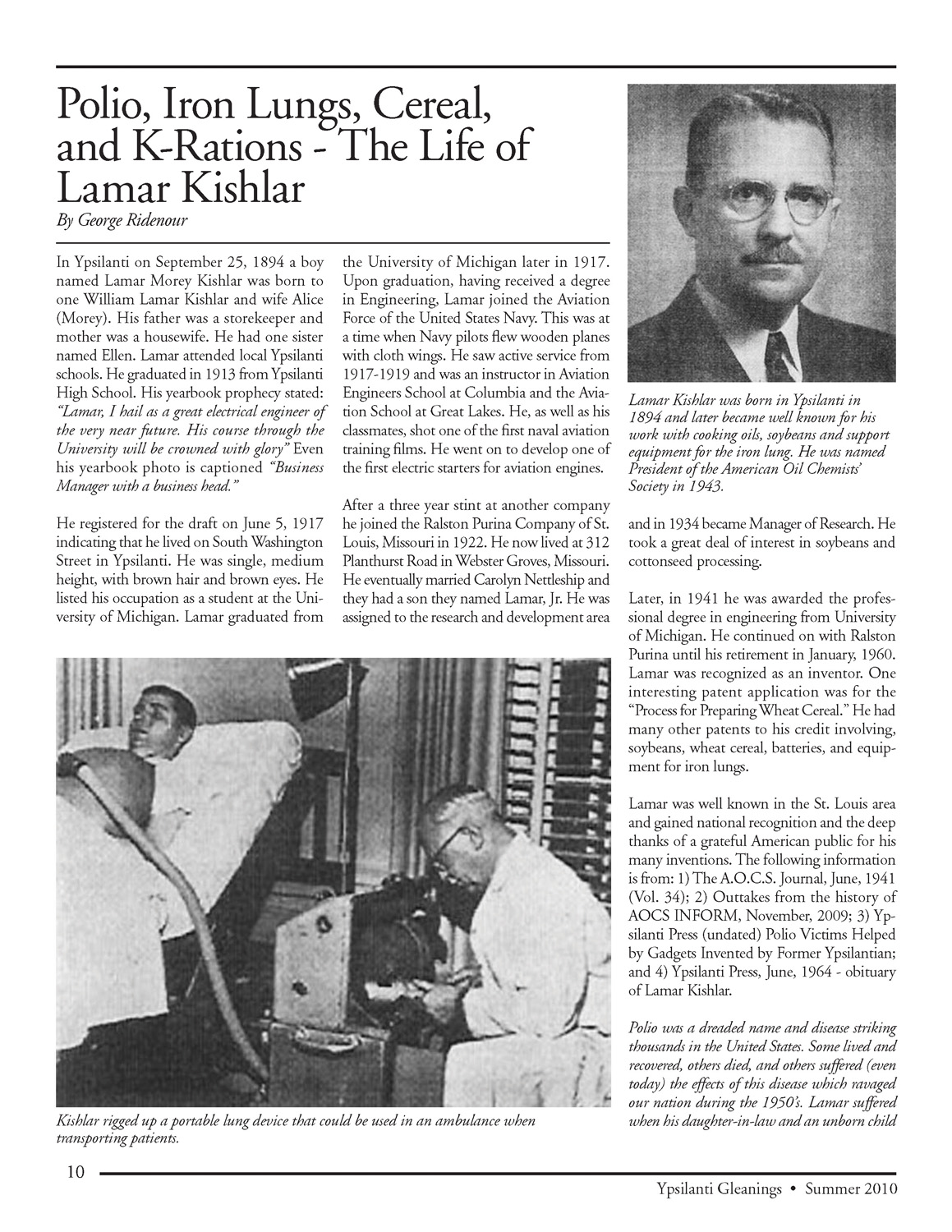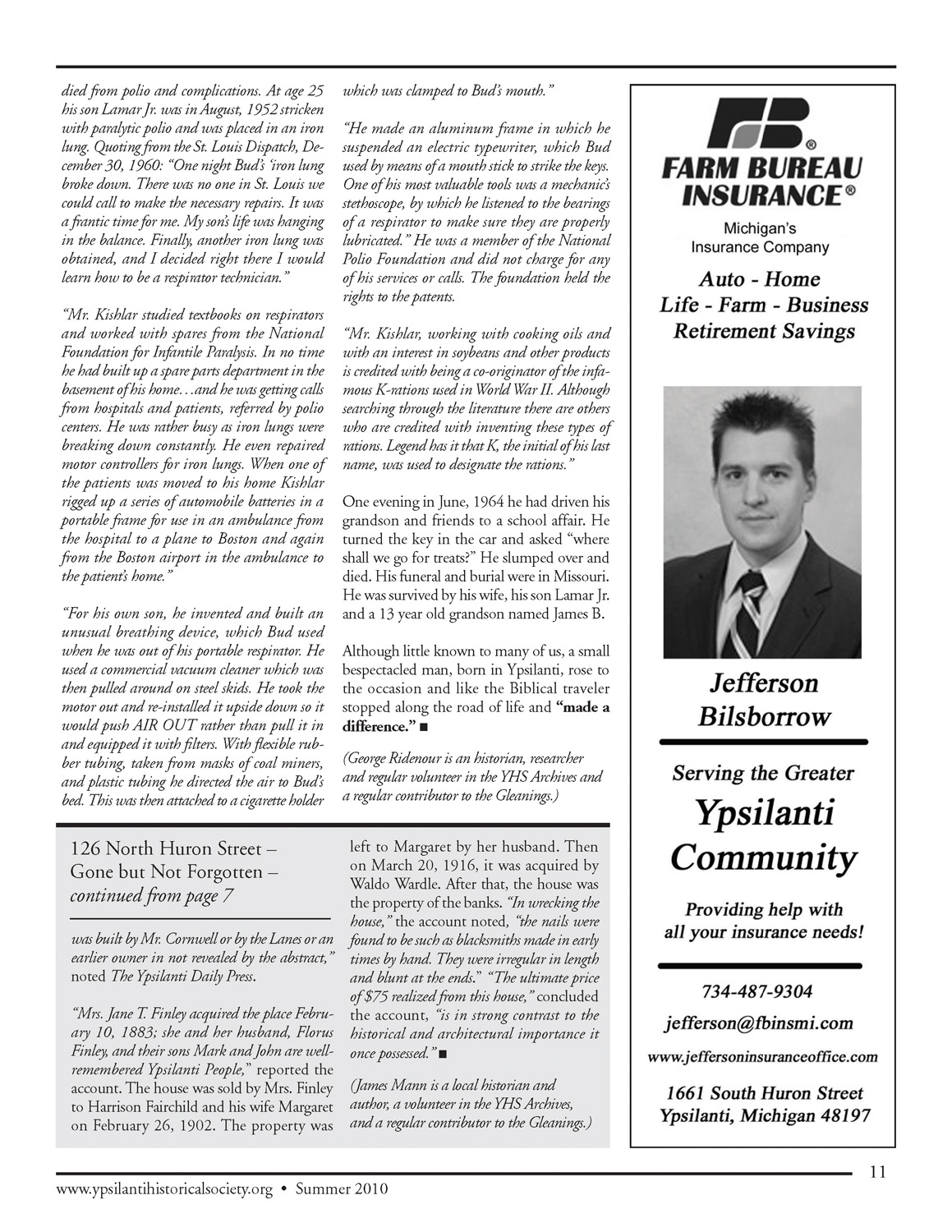Polio, Iron Lungs, Cereal, and K-Rations - The Life of Lamar Kishlar


Parent ID
Rights Held By
Ypsilanti Historical Society
Doc
Subjects
Ypsilanti Gleanings
Biography